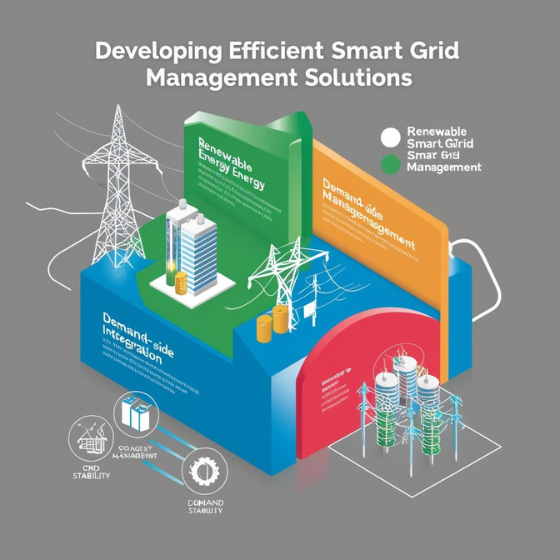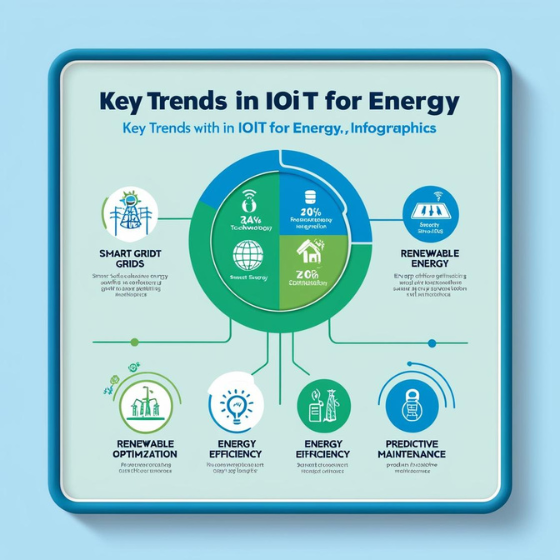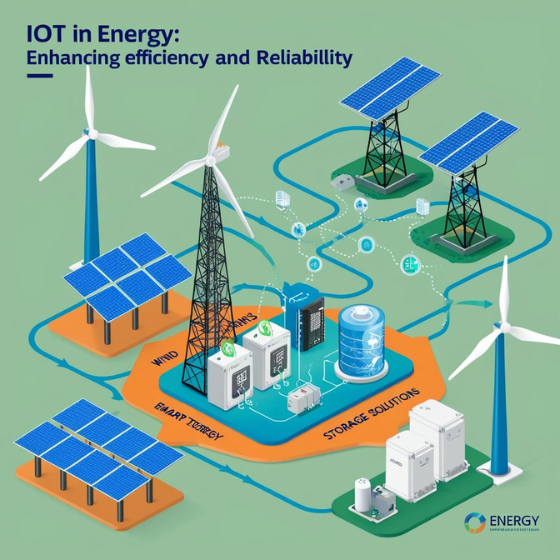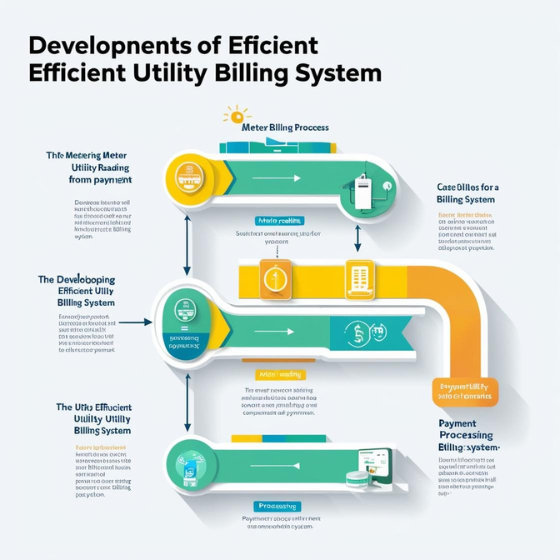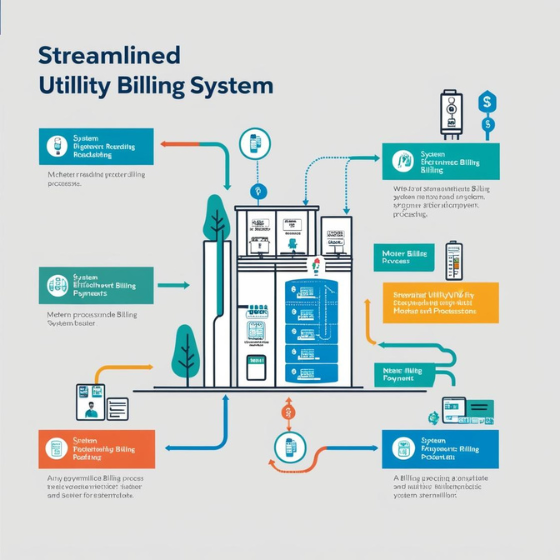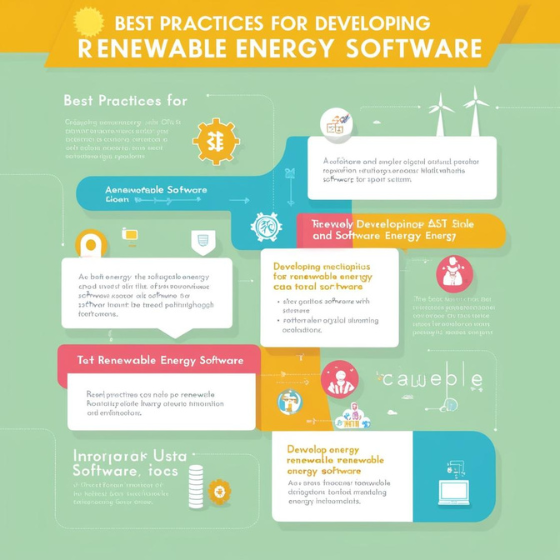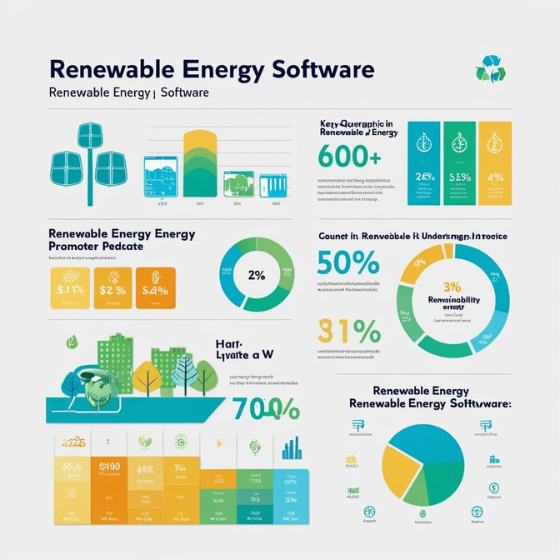Developing Efficient Smart Grid Management Solutions
The energy sector is undergoing a massive transformation, driven by the need for sustainable solutions and the integration of advanced technologies. At the heart of this shift is efficient smart grid management, a system that combines digital innovation with traditional power grids to create smarter, more adaptive energy distribution networks.
In this blog, we’ll delve into the importance of smart grid management, explore the tools and technologies driving its evolution, and outline actionable steps for developing efficient solutions.
Introduction to Smart Grid Management
A smart grid is an energy network that uses automation, data analytics, and IoT devices to optimize energy distribution and consumption. Unlike traditional grids, smart grids are dynamic and capable of responding in real-time to changes in energy demand and supply.
Efficient smart grid management ensures that these advanced systems operate seamlessly, delivering benefits such as:
- Reduced energy wastage
- Enhanced grid reliability
- Seamless integration of renewable energy sources
As global energy consumption continues to grow, the need for smart grid solutions becomes even more critical.
Why It Matters:
The International Energy Agency (IEA) projects that energy demand will increase by 25% by 2040. Without efficient management, traditional grids risk inefficiencies, blackouts, and higher emissions.
Key Components of Efficient Smart Grid Management
Building a robust smart grid management system involves integrating several core components.
1. Real-Time Monitoring and Automation
IoT sensors and smart meters play a crucial role in collecting real-time data on energy consumption and grid performance.
- Actionable Insight: Use predictive analytics to anticipate and address issues before they escalate.
- Example: Utilities in California use IoT-driven systems to detect grid stress, preventing blackouts during peak demand.
2. Renewable Energy Integration
Efficient smart grid management ensures the seamless integration of solar, wind, and other renewable energy sources into the energy mix.
- Benefit: Reduces dependency on fossil fuels while maintaining grid stability.
- Pro Tip: Invest in advanced storage solutions like lithium-ion batteries to store excess renewable energy.
3. Decentralized Energy Systems
Microgrids and decentralized networks allow localized energy generation and management, reducing pressure on central grids.
- Case Study: A microgrid implemented in Puerto Rico post-Hurricane Maria restored power to thousands faster than traditional systems.
Technologies Driving Efficient Smart Grid Management Solutions
Efficient smart grid management relies on cutting-edge technologies to enhance its functionality and effectiveness.
1. Artificial Intelligence (AI)
AI enables predictive maintenance, energy demand forecasting, and dynamic grid optimization.
- Use Case: AI systems in Germany predict energy demand spikes and allocate resources to prevent disruptions.
2. Blockchain
Blockchain technology provides secure and transparent energy transactions, especially for peer-to-peer (P2P) energy trading.
- Benefit: Simplifies energy trading for consumers generating their own electricity.
3. 5G Connectivity
The high-speed data transmission of 5G ensures seamless communication between grid components, improving responsiveness.
4. Big Data Analytics
By analyzing large datasets, energy providers can identify inefficiencies and create more accurate load forecasts.
5. Digital Twins
A digital twin is a virtual replica of a grid, allowing operators to simulate scenarios and optimize performance.
Steps to Develop Efficient Smart Grid Management Solutions
For organizations looking to create or implement smart grid solutions, here’s a roadmap:
1. Assess Current Infrastructure
Start by evaluating your existing grid’s capacity, performance, and vulnerabilities.
- Example: Conduct energy audits to pinpoint areas of inefficiency.
2. Incorporate Scalable Technologies
Invest in systems that can grow alongside energy demands. This includes modular IoT devices and cloud-based management platforms.
3. Focus on Interoperability
Ensure new systems can integrate seamlessly with legacy grid infrastructure.
4. Prioritize Cybersecurity
With increased connectivity comes the risk of cyberattacks. Implement robust encryption and real-time monitoring tools to safeguard the grid.
5. Partner with Industry Experts
Collaborate with technology providers like Sodio to develop customized, efficient smart grid management solutions tailored to your specific needs.
Discover how Sodio can help you design cutting-edge smart grid management systems that drive efficiency and sustainability.
Benefits of Developing Efficient Smart Grid Solutions
Efficient smart grid management offers numerous advantages for stakeholders across the energy ecosystem.
1. Cost Savings
Optimize energy distribution to reduce operational costs and minimize energy wastage.
2. Improved Grid Reliability
Enhance the grid’s ability to withstand disruptions, ensuring consistent power delivery.
3. Environmental Impact
Lower carbon emissions through better energy management and integration of renewable sources.
4. Consumer Empowerment
Provide users with tools to monitor and adjust their energy consumption, fostering a culture of energy conservation.
5. Regulatory Compliance
Adopt technologies that align with global sustainability and emission reduction targets.
Real-World Example: A Smart Grid Success Story
City of Amsterdam’s Smart Grid Initiative
Amsterdam has implemented a city-wide smart grid that integrates renewable energy, electric vehicles, and IoT devices. The result?
- A 25% reduction in energy wastage.
- Faster recovery times after outages.
- Increased adoption of green technologies among residents.
This project showcases the potential of efficient smart grid management to transform urban energy systems.
Ready to replicate such success? Partner with Sodio for smart grid solutions tailored to your city or business.
Challenges in Implementing Smart Grid Management Solutions
Despite its benefits, implementing efficient smart grid solutions isn’t without challenges:
- High Upfront Costs: The initial investment in smart grid infrastructure can be significant.
- Data Privacy Concerns: Consumers are often wary of sharing detailed energy usage data.
- Regulatory Complexities: Aligning with evolving energy policies and standards can be challenging.
- Technical Expertise: Managing advanced systems requires skilled personnel.
Solutions:
- Leverage government incentives for smart grid adoption.
- Partner with technology providers for training and implementation support.
The Future of Smart Grid Management
The evolution of smart grid management is closely tied to advancements in technology and policy. Here’s what the future holds:
- AI-Powered Self-Healing Grids: Fully autonomous grids capable of identifying and resolving faults in real time.
- Energy-as-a-Service (EaaS): Subscription-based energy models where consumers pay for usage rather than infrastructure.
- Dynamic Energy Pricing: Real-time adjustments to energy costs based on supply and demand, enabled by smart grids.
As these trends unfold, businesses and governments must adapt by investing in efficient, future-ready smart grid solutions.
Conclusion
Efficient smart grid management is the cornerstone of modern energy systems, offering solutions to the challenges of sustainability, reliability, and cost-effectiveness. By leveraging cutting-edge technologies like AI, IoT, and blockchain, stakeholders can create systems that not only meet today’s energy demands but also pave the way for a sustainable future.
For businesses, cities, and governments looking to lead in energy innovation, the time to act is now. Developing efficient smart grid management solutions isn’t just about upgrading infrastructure—it’s about creating a smarter, greener, and more resilient energy future.
Ready to transform your energy management? Contact Sodio today to learn how our customized smart grid solutions can drive efficiency and sustainability for your organization.
